The Talking Drum
There is fascinating tension in all music, and all communication, between moving, dynamic forms and fixed concepts - between the 'unrestricted' living spectacle of the medium and the possible layers of 'stricter' meaning we transmit and receive through the language of it. This tension is never more pronounced than in a form where rhythms communicate concepts as signs (i.e. communicate as words do).
Exercise 1
Take a series of randomly chosen words, say a sentence or two from the newspaper, and try creating a distinctive rhythmic phrase to represent each separate word with. List your words, and notate your rhythmic phrases beside them. Try arranging you words into new sentences (they can be nonsense) and then play them as a series of rhythmic phrases.
Exercise 2: the drumming tongue:
Primiti too taa
Write a one-minute score for voice(s) using only letters. Use shape, size, spacing etc, to express the dynamics of your piece.
Example:
drrrrr ba drrrrr baBA Bkw? Bkw!
sh
swwwwwwwwWWWWWWWWUUUUUUUUUUUUUUUUUuuuuuuuuu wwwwsssssssss
g
sssssssssssssssssssssssssssssssssssssssssssssssssssSssssssssssssssssssssssssssssssssssssssssssssssss.
LaLaLalooloolooloo ssssSoooooooooo! drrrrr sh
drrrrr ba drrrrr sh
po po po sh
drrrrr ba drrrrr baBA
h h
t t tt tt TTTTT
fffffffffffffffffffffffffffd
w
kbvvvvvvvvvvvvvvvvvvvvv krakrakrakra krrra!
vvvvvvvvvvvvvvv zzzzzzzzzzzzz
vvvvvvvvvvvvv

bababadalgharaghtakamminarronnkonnbronntonnerronntuonnthunntrovarrhounawnskawntoohoohoordenenthurnuk!
- a hundred-lettered name for thunder, which appears, and sounds, in the opening passage of Finnegans Wake (1939), by James Joyce.
In this sample of Finnegans Wake, focus on the effect of a ceaseless flow words (often referred to as a stream of consciousness), images and strange fragments of life bubble up, blend and subside. The rhythmic and percussive qualities of the words and the melodic intonation of the speaker become hypnotic. Relax and absorb - don't try to understand. The more you open up to the language and allow your mind to absorb it the more you will understand.
Finnegans Wake

(Dactylic metre)
Metre

There is fascinating tension in all music, and all communication, between moving, dynamic forms and fixed concepts - between the 'unrestricted' living spectacle of the medium and the possible layers of 'stricter' meaning we transmit and receive through the language of it. This tension is never more pronounced than in a form where rhythms communicate concepts as signs (i.e. communicate as words do).
Exercise 1
Take a series of randomly chosen words, say a sentence or two from the newspaper, and try creating a distinctive rhythmic phrase to represent each separate word with. List your words, and notate your rhythmic phrases beside them. Try arranging you words into new sentences (they can be nonsense) and then play them as a series of rhythmic phrases.
Exercise 2: the drumming tongue:
Primiti too taa
Write a one-minute score for voice(s) using only letters. Use shape, size, spacing etc, to express the dynamics of your piece.
Example:
drrrrr ba drrrrr baBA Bkw? Bkw!
sh
swwwwwwwwWWWWWWWWUUUUUUUUUUUUUUUUUuuuuuuuuu wwwwsssssssss
g
sssssssssssssssssssssssssssssssssssssssssssssssssssSssssssssssssssssssssssssssssssssssssssssssssssss.
LaLaLalooloolooloo ssssSoooooooooo! drrrrr sh
drrrrr ba drrrrr sh
po po po sh
drrrrr ba drrrrr baBA
h h
t t tt tt TTTTT
fffffffffffffffffffffffffffd
w
kbvvvvvvvvvvvvvvvvvvvvv krakrakrakra krrra!
vvvvvvvvvvvvvvv zzzzzzzzzzzzz
vvvvvvvvvvvvv

bababadalgharaghtakamminarronnkonnbronntonnerronntuonnthunntrovarrhounawnskawntoohoohoordenenthurnuk!
- a hundred-lettered name for thunder, which appears, and sounds, in the opening passage of Finnegans Wake (1939), by James Joyce.
In this sample of Finnegans Wake, focus on the effect of a ceaseless flow words (often referred to as a stream of consciousness), images and strange fragments of life bubble up, blend and subside. The rhythmic and percussive qualities of the words and the melodic intonation of the speaker become hypnotic. Relax and absorb - don't try to understand. The more you open up to the language and allow your mind to absorb it the more you will understand.
Finnegans Wake

(Dactylic metre)
Metre
Types of Metre in English poetry:
Iambic (waking) meter (unstressed/stressed)
Trochaic (running) meter (stressed/unstressed)
Spondaic (solemn) meter, (stressed/stressed)
Anapestic (rebounding) meter (unstressed/unstressed/ stressed)
Dactylic (triplet or 'finger-joints') meter (stressed/unstressed/unstressed)
Metre lengths:
monometre
dimetre
trimetre
tetrametre
pentametre
hexametre
heptametre
octametre
5 and 7 based metres don't usually form 'odd metres' as when they are doubled they become even numbered lines. Thus Shakespearean sonnets in iambic pentametre are made up of 10-syllable lines. Poems in heptamtre are called fourteeners.
Dactylic hexametre - practice reciting this text, following the notational cues. Notice how the use of metre adds a layer of musical and dramatic expression.
In very early Greek culture, poets didn't just compose verses in hexameter and then memorise and recite them; they actually composed as they recited, while accompanying themselves on the lyre, kithara or phorminx, the metre and harmonic strains providing a rhythmic and harmonic structure through which to improvise a song-story.
In very early Greek culture, poets didn't just compose verses in hexameter and then memorise and recite them; they actually composed as they recited, while accompanying themselves on the lyre, kithara or phorminx, the metre and harmonic strains providing a rhythmic and harmonic structure through which to improvise a song-story.
Homeric verse (Hexamter)

The Alexandrine is a form of hexameter derived from Homeric hexameter that once dominated French poetry. In its classical form it consists of a line of 12 syllables with major stresses on the 6th syllable (which precedes the medial caesura [pause]) and on the last syllable, and one secondary accent in each half line.
It is hard to use classical hexameter in English, because English is a stress-timed language that condenses vowels and consonants between stressed syllables, while hexameter relies on the regular timing of the phonetic sounds.
The English Romantic poet Shelly used the Alexandrine
To a Skylark (in Alexandrine)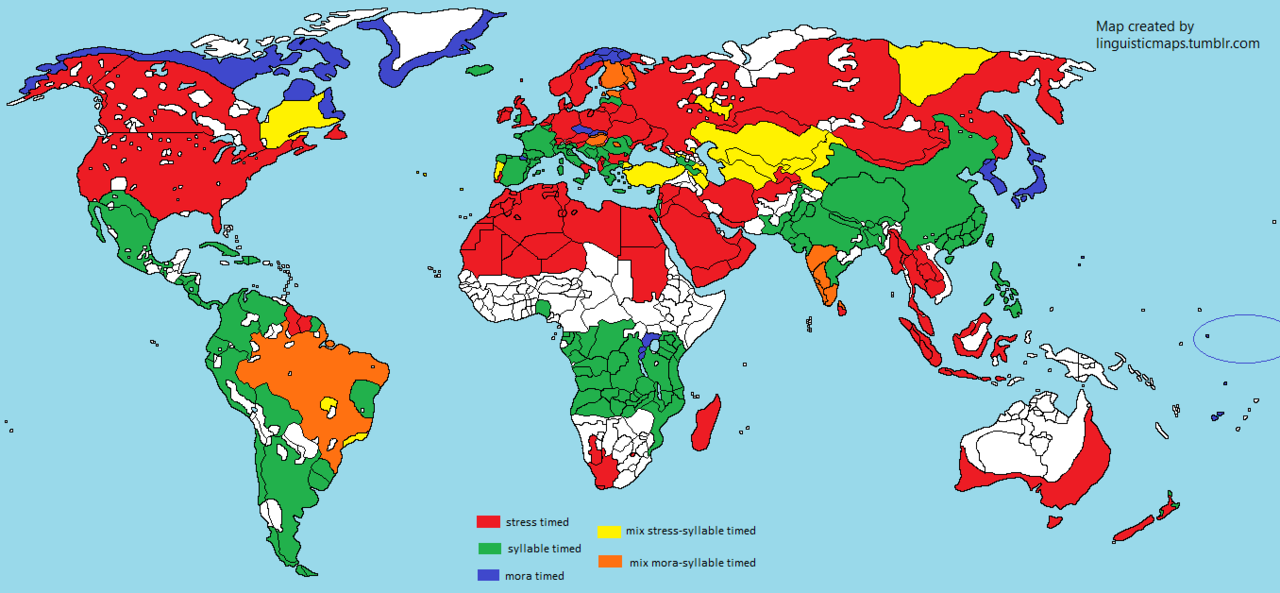
Rhythmic patterns in languages

The Alexandrine is a form of hexameter derived from Homeric hexameter that once dominated French poetry. In its classical form it consists of a line of 12 syllables with major stresses on the 6th syllable (which precedes the medial caesura [pause]) and on the last syllable, and one secondary accent in each half line.
It is hard to use classical hexameter in English, because English is a stress-timed language that condenses vowels and consonants between stressed syllables, while hexameter relies on the regular timing of the phonetic sounds.
The English Romantic poet Shelly used the Alexandrine
To a Skylark (in Alexandrine)

Rhythmic patterns in languages
Red. Stress timed - languages usually with strong vowel reduction, lexical stress, complex syllable structure, a bigger ration of consonants in relation to vowels. The intervals between stressed syllables are about even.
Green. Syllable timed - languages usually lacking vowel reduction, fixed stress or not, simpler syllable structure, more percentage of vowel time. The time between syllables is about the same.
Blue. Mora timed - languages usually with long vowels and geminate* consonants, simple syllable structure. The time between two moras (a sub-syllable constituent) is about the same.
Yellow and orange. Mixed types - have mixed characteristics between two of the three types above.
In english we don't speak in a strict metre, but we do in fact speak in a kind of metre that we stretch and contract to emphasise the aspects of our speech we want to draw attention to.
Say these word collocations, notice the percussive effect of this repetitive but rhythmically and texturally varying text. Think of yourself as a drummer doing little drum rolls with your tongue:
economic forces, economic goal, economic growth, economic inequality, economic integration, economic interests, economic policy, economic power, economic prosperity, economic reform, economic relations, economic relationships, economic resources, economic sector, economic stability, economic status, economic structure, economic success, economic system, economic theory, economic value, economic welfare
educational institution, educational opportunity, educational policy, educational programme, educational provision, educational qualification, educational research, educational setting, educational system
effective communication, effective implementation, effective intervention, effective management, effective method, effective participation, effective policy, effective treatment
Notice how you package each collocation into the same space, regardless of how many syllables there are or where the stress comes in the words. That's what stress-timed language is about - "economic growth" (5 syllables) and "economic prosperity" (8 syllables) are articulated over the same metrical portion. We may vary our tempo or even pause for effect, but we are still obeying a metre. A phrase like "educational participation" is quite a tricky 'drum roll' due to where the stressed syllables come. If we notated how people articulate this phrase we'd find they need to 'get in' before the beginning of the main beat of their sentence so that the stressed syllables will fall 'on the pulse' where we expect to hear stress. In this sense, English is quite a rhythmically elaborate language, which if it were musical would be rather like free jazz.
The 'arhythmic'
Rhythm is a continuum. What seems arhythmic is often, when you take a closer look, actually not so. Likewise, the closer we look at what are apparently solid rhythms, the more inconsistency we can find. Indeed some musicians get so obsessed with rhythmic accuracy that it can deafen them to everything else.
Music isn't always about control. Sometimes it's about exploring things that are beyond control. In this meditative exercise by John Stevens, players are asked to focus on spaces or gaps that appear in the soundscape.
'Using only clicks (the shortest sounds we can make) each individual in the group tries to locate a space (silence) in which to place their click (dot). Because of the group activity, the silences are minute and pass by rapidly, so by the time you have heard a space, and attempted to put a dot in it, that space may have vanished...'
Dot Piece

Pierre Schaeffer - "etude aux chemins de fer" - 1948
"(Musique concrète) starts from concrete sounds and moves towards a structure. In contrast, traditional classical music starts from an abstract musical schema. This is then notated and only expressed in concrete sound as a last stage, when it is performed."
- Pierre Schaeffer
In english we don't speak in a strict metre, but we do in fact speak in a kind of metre that we stretch and contract to emphasise the aspects of our speech we want to draw attention to.
Say these word collocations, notice the percussive effect of this repetitive but rhythmically and texturally varying text. Think of yourself as a drummer doing little drum rolls with your tongue:
economic forces, economic goal, economic growth, economic inequality, economic integration, economic interests, economic policy, economic power, economic prosperity, economic reform, economic relations, economic relationships, economic resources, economic sector, economic stability, economic status, economic structure, economic success, economic system, economic theory, economic value, economic welfare
educational institution, educational opportunity, educational policy, educational programme, educational provision, educational qualification, educational research, educational setting, educational system
effective communication, effective implementation, effective intervention, effective management, effective method, effective participation, effective policy, effective treatment
Notice how you package each collocation into the same space, regardless of how many syllables there are or where the stress comes in the words. That's what stress-timed language is about - "economic growth" (5 syllables) and "economic prosperity" (8 syllables) are articulated over the same metrical portion. We may vary our tempo or even pause for effect, but we are still obeying a metre. A phrase like "educational participation" is quite a tricky 'drum roll' due to where the stressed syllables come. If we notated how people articulate this phrase we'd find they need to 'get in' before the beginning of the main beat of their sentence so that the stressed syllables will fall 'on the pulse' where we expect to hear stress. In this sense, English is quite a rhythmically elaborate language, which if it were musical would be rather like free jazz.
The 'arhythmic'
Rhythm is a continuum. What seems arhythmic is often, when you take a closer look, actually not so. Likewise, the closer we look at what are apparently solid rhythms, the more inconsistency we can find. Indeed some musicians get so obsessed with rhythmic accuracy that it can deafen them to everything else.
Music isn't always about control. Sometimes it's about exploring things that are beyond control. In this meditative exercise by John Stevens, players are asked to focus on spaces or gaps that appear in the soundscape.
'Using only clicks (the shortest sounds we can make) each individual in the group tries to locate a space (silence) in which to place their click (dot). Because of the group activity, the silences are minute and pass by rapidly, so by the time you have heard a space, and attempted to put a dot in it, that space may have vanished...'
Dot Piece

Pierre Schaeffer - "etude aux chemins de fer" - 1948
"(Musique concrète) starts from concrete sounds and moves towards a structure. In contrast, traditional classical music starts from an abstract musical schema. This is then notated and only expressed in concrete sound as a last stage, when it is performed."
- Pierre Schaeffer
Decoding rhythm

Interactive Rhythm Practice: from simple to syncopated
Remember to use the video settings to slow the video down if you're struggling to keep up.
Syncopation made easy! Interactive RHYTHM training
The following video explains why rhythm is notated that way it is:
Decoding Rhythm: how to play rhythms that seem hard (but really aren't)
This one shows you how to work out how to play different polyrhythms. Polyrhythms occur because there is a contrasting (rather than straightforward) division of the beat. The lower division of the beat doesn't multiply into the higher division. Examples: 2 and 3, 2 and 5 etc. To work out how to play a polyrhythm, find the lowest multiple of the two numbers. So, 2 x 3 = 6 and use that as the bar. Then play the separate rhythms where they fit into the bar based on that multiple.
Play any POLYRHYTHM easily with this trick! (Interactive rhythm video)
Hearing double - overlapping rhythmic textures

Remember to use the video settings to slow the video down if you're struggling to keep up.
Syncopation made easy! Interactive RHYTHM training
The following video explains why rhythm is notated that way it is:
Decoding Rhythm: how to play rhythms that seem hard (but really aren't)
This one shows you how to work out how to play different polyrhythms. Polyrhythms occur because there is a contrasting (rather than straightforward) division of the beat. The lower division of the beat doesn't multiply into the higher division. Examples: 2 and 3, 2 and 5 etc. To work out how to play a polyrhythm, find the lowest multiple of the two numbers. So, 2 x 3 = 6 and use that as the bar. Then play the separate rhythms where they fit into the bar based on that multiple.
Play any POLYRHYTHM easily with this trick! (Interactive rhythm video)
List of Basic Polyrhythms
First Rhythm
|
Second Rhythm
|
Least Common Multiple
|
2
|
3
|
6
|
2
|
5
|
10
|
3
|
4
|
12
|
2
|
7
|
14
|
3
|
5
|
15
|
2
|
9
|
18
|
4
|
5
|
20
|
3
|
7
|
21
|
3
|
8
|
24
|
4
|
6
|
12
|
4
|
7
|
28
|
5
|
6
|
30
|
5
|
7
|
35
|
4
|
9
|
36
|
5
|
8
|
40
|
6
|
7
|
42
|
5
|
9
|
45
|
6
|
8
|
24
|
6
|
9
|
54
|
7
|
8
|
56
|
7
|
9
|
63
|
7
|
11
|
77
|
8
|
9
|
72
|
Hearing double - overlapping rhythmic textures

"The underlying rhythmic engine of Hooker’s boogie is the perpetual cycle of alternating long beats and short upbeats. … the syncopation generated by the omnipresent upbeats is so prominently featured that one is led to wonder whether they, and not the beats, carry the groove’s timekeeping function."
- Excerpt from How Hooker found his boogie: a rhythmic analysis of a classic groove FERNANDO BENADON and TED GIOIA
Moondog - Chaconne in G major
Chaconne is a deliberately repetitive style of music that was popular in the Baroque era. It was apparently inspired by seductive dances that came from South America.
Bach - Chaconne, Partita No. 2
Listen for the 3/4 time signature.
Chaconne is a deliberately repetitive style of music that was popular in the Baroque era. It was apparently inspired by seductive dances that came from South America.
Bach - Chaconne, Partita No. 2
Listen for the 3/4 time signature.
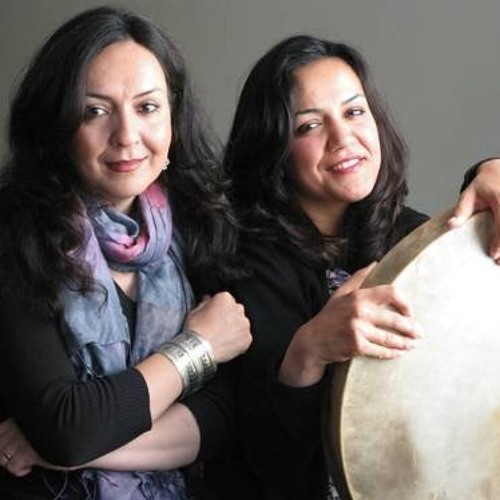
Kronos Quartet, Mahsa and Marjan Vahdat, My Ruthless Companion
Tension built by beautifully executed, increasingly overlapping rhythmic phrases.
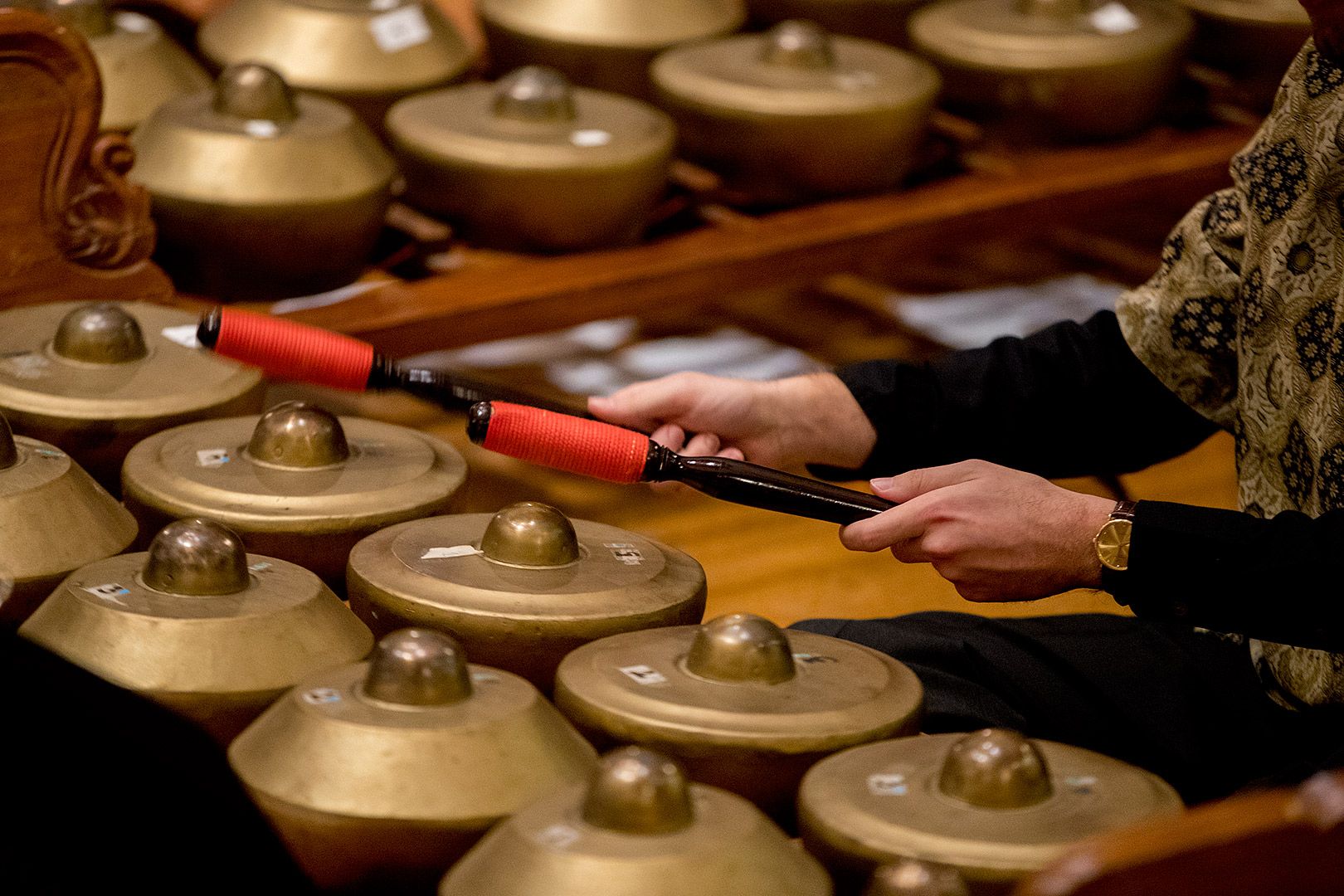
Indonesian gamelan medley from Java, Sunda and Bali
Visualising rhythm
"Whatever the eye sees - there's always sound happening."
- Evelyn Glennie
Hans Richter - Film Ist Rhythm: Rhythmus 21 (c1921)
Rhythm is not only about sound. It is about sensation.

Steve Reich - Music for Pieces of Wood - Visualization
Rhythm and mood / atmosphere

Orchestra Baobab
Enjoy the profound atmospheric shifts that happen when we use rhythm this masterfully. Play the basic rhythm (the main beat and secondary accents) with two hands. Record each in isolation as you go and then listen back over them.
Foulo
Fayinkounko
Natalia
Mariama
Woulinewa
Sey
Caravana
Douga
Elegant light percussion and delightful fleeting embellishments sustain a mesmerising groove.
Robust, pithy elegantly 'electronicised' beats. Use of 16ths over a plodding lower frequency pulse.
xxxxxxxxxx(xx)xx(xx)
O O O O O
O O O O O
O O O O O
xxxxxxxxxx(xx)xx(xx)
O O O O O
O O O O O
O O O O O
Consider this mathematically - Germanically - precise music as part of the tradition of J.S. Bach.
Sweet 16. The secret of this groove is the rapid 16s over a leisurely 4/4 lower frequency pulse using a dotted crotchet + quaver + crotchet + one beat rest. O. o O - / O. o O -
Dancing with the Devil - rhythmic convolution
Sweet 16. The secret of this groove is the rapid 16s over a leisurely 4/4 lower frequency pulse using a dotted crotchet + quaver + crotchet + one beat rest. O. o O - / O. o O -
Dancing with the Devil - rhythmic convolution
An iconic example of scored polyrhythmic orchestral music.
More:
Ratios
Political Polyrhythms. Another example of visualisation (sculptural, spatial, kinetic) with sonic realisation of rhythmic ideas.
Use the settings to slow the video down. Try clapping for the accents.
This piece is a compound rhythm, in 6/8. The rhythmic centre of gravity shifts between the first and the fourth beat of the bar.
Focus: skim through the variations one by one, note the time signature and count along. See what rhythmic and melodic ideas arise through the use of counterpoint.
Rhythmic serendipity

The alpha rhythm
This landmark piece by Alvin Lucier bypasses the motor system and directly amplifies the alpha rhythm of the brain.
Alvin Lucier: Music for Solo Performer (1965)
Rhythmic serendipity

The alpha rhythm
This landmark piece by Alvin Lucier bypasses the motor system and directly amplifies the alpha rhythm of the brain.
Alvin Lucier: Music for Solo Performer (1965)
A musician exploring biofeedback:






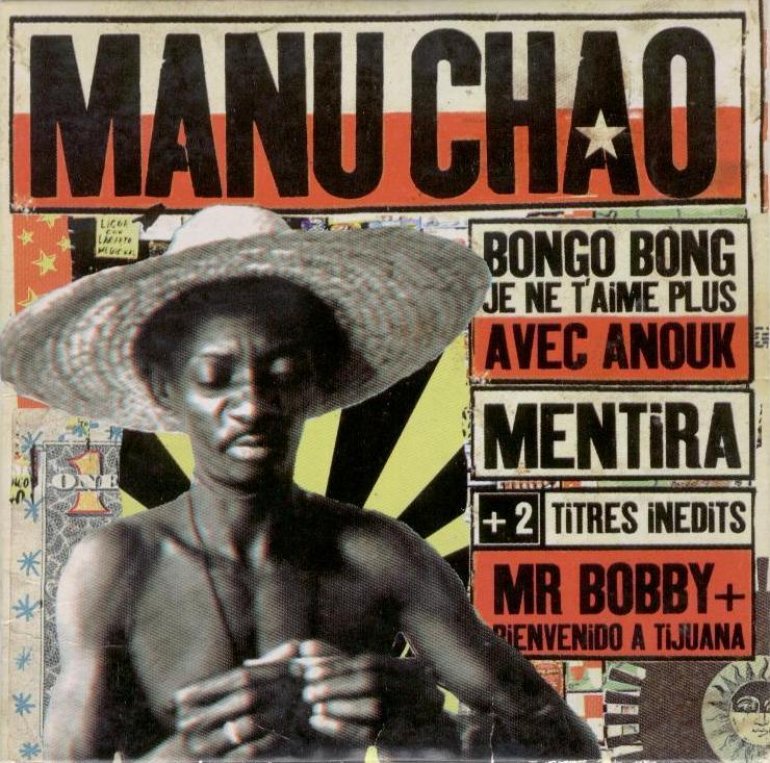

:format(jpeg):mode_rgb():quality(90)/discogs-images/R-75536-1458852008-8359.jpeg.jpg)

:format(jpeg):mode_rgb():quality(90)/discogs-images/R-8219607-1457375032-3561.jpeg.jpg)
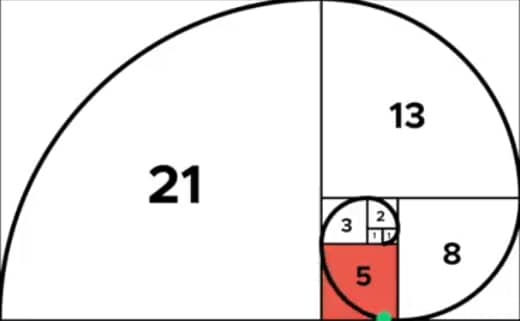



fantastic post!
ReplyDeleteThe "over the sea past crete" song notation leaves me baffled.. I'll need to run over it with you.
"To work out how to play a polyrhythm, find the lowest multiple of the two numbers. So, 2 x 3 = 6 and use that as the bar. Then play the separate rhythms where they fit into the bar based on that multiple." - that's so clear and succinct!